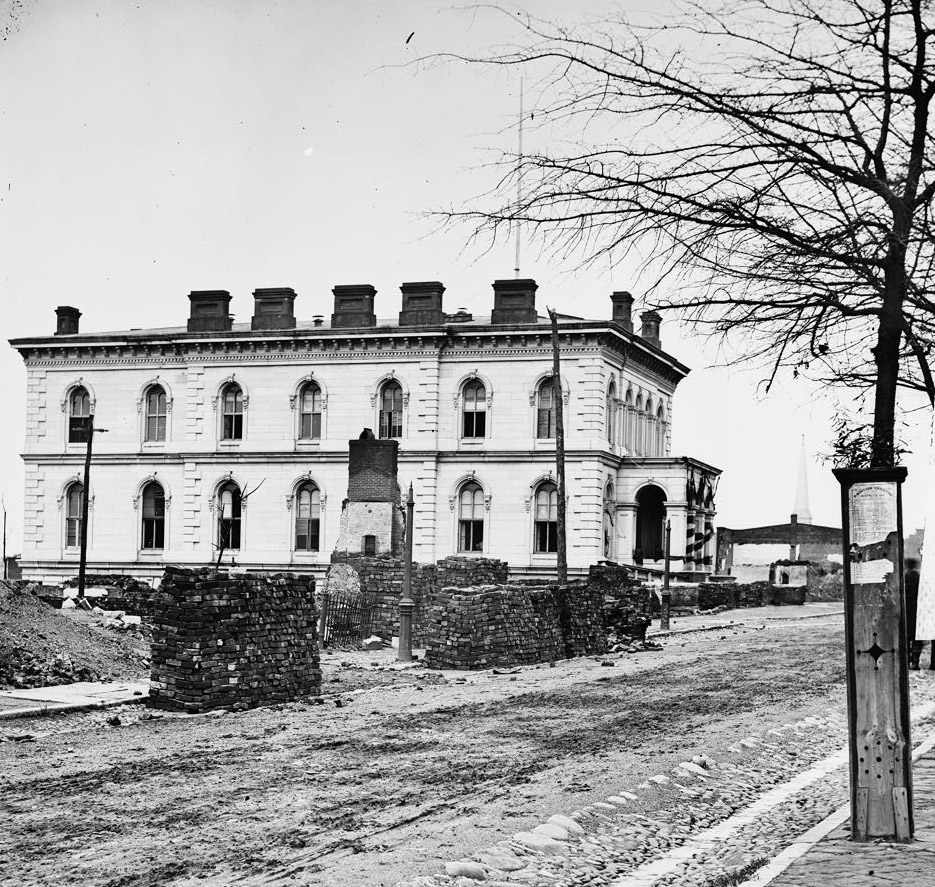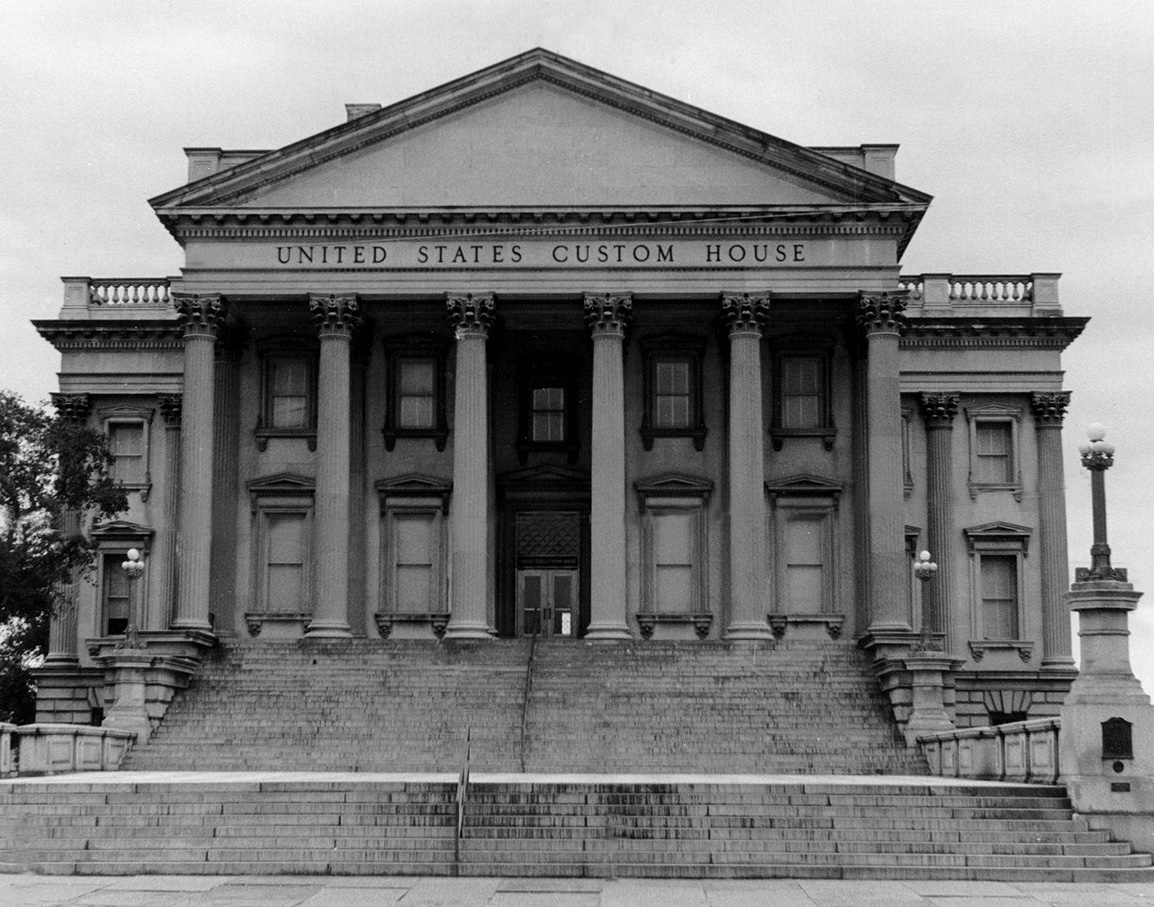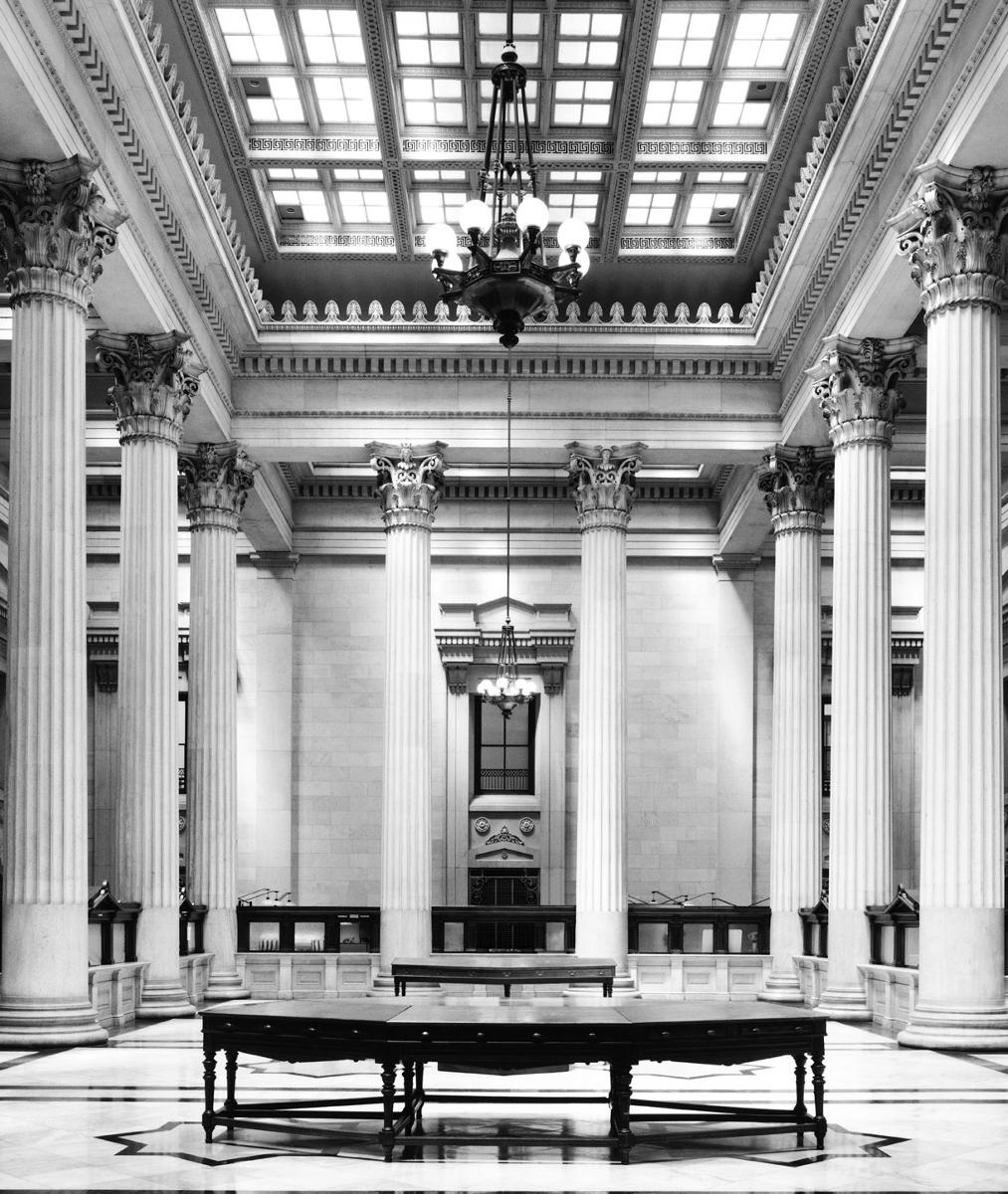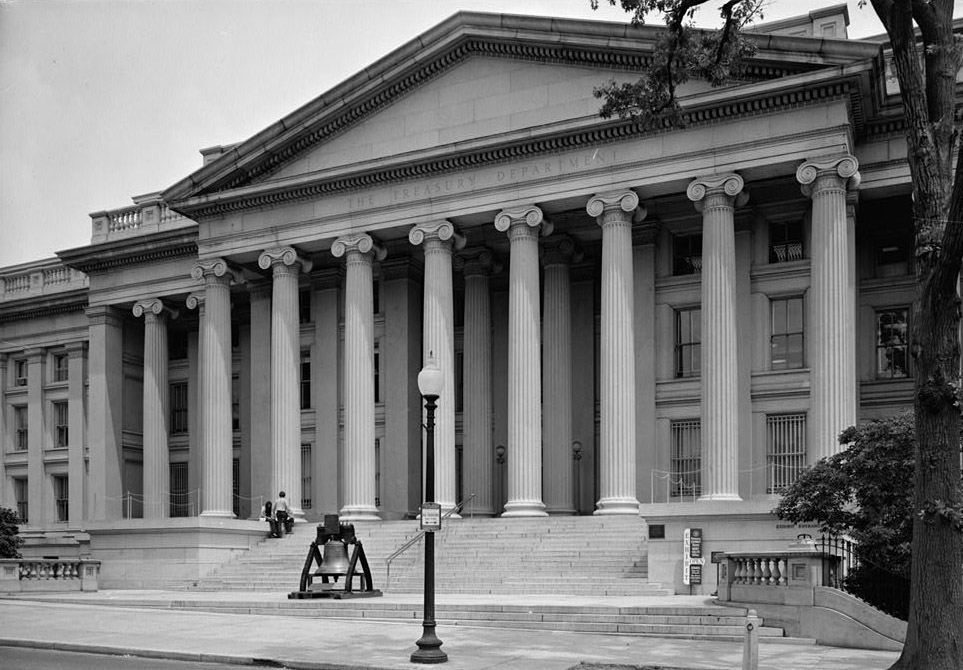
The U.S. Custom House (today the Lewis F. Powell U.S. Courthouse) stands among the ruins of Richmond.
Fall of Richmond
During the Civil War, the Confederacy chose Richmond, Virginia, as its capital. Six days before General Robert E. Lee surrendered to General Ulysses S. Grant in Appomattox on April 9, 1865, the Confederate government abandoned the city. As Confederate troops evacuated Richmond, they set fire to much of the city. All but two of the buildings in the historic cored burned. One of these surviving structures was the 1858 U.S. Custom House, which had been occupied by the Treasury Department of the Confederacy for the war’s duration.
Originally designed by Ammi B. Young as a custom house with a post office and courtroom, the building reverted to its original use after the war. On May 10, 1866, Confederate President Jefferson Davis was indicted in the building where he had once had a third floor office. The building was renamed in 1993 after former Supreme Court Justice Lewis F. Powell, Jr., and is the oldest courthouse in GSA’s inventory.
Visit the Lewis F. Powell, Jr. U.S. Courthouse, Richmond, VA

 U.S. General Services Administration
U.S. General Services Administration



